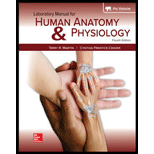
The ovum and sperm unite and form a diploid cell called the
a. pronucleus.
b. blastocyst.
c. morula.
d. zygote.
Introduction:
Sperm is a male sex cell develop in testis during spermiogenesis where ovum is female sex cell produced in the ovary. Diploid cell means a cell containing two sets of chromosomes where haploid contain a half number of chromosomes.
Answer to Problem 1PL
Correct answer:
The correct answer is an option (d) The ovum and sperm unite and form a diploid cell called the zygote.
Explanation of Solution
Explanation/justification for the correct answer:
Option (d) The ovum and sperm unite and form a diploid cell called the zygote. when sperm fertilized with female gamete i.e. ovum it becomes a zygote. Sperm and ovum are haploid cells when it fuses together it becomes a diploid cell. So, the correct answer is an option (d).
Explanation for incorrect answer:
Option (a) The ovum and sperm unite and form a diploid cell called the pronucleus. Pronucleus is actually sperm or nucleus before fertilization. So, this is an incorrect option.
Option (b) The ovum and sperm unite and form a diploid cell called the blastocyst. The blastocyst is the early development of an organism. So, this is an incorrect answer.
Option (c) The ovum and sperm unite and form a diploid cell called a morula. This option is incorrect because it is an earlier stage of the embryo. So this option is incorrect.
Want to see more full solutions like this?
Chapter 61 Solutions
Laboratory Manual For Human Anatomy & Physiology
- What do you think would happen if multiple sperm fused with one egg?arrow_forwardNutrient and waste requirements for the developing fetus are handled during the first few weeks by _____. a. the placenta b. diffusion through the endometrium c. the chorion d. the blastocystarrow_forwardDuring oogenesis the cell that is fertilized by a sperm to become an egg is: A primary spermatocyte B secondary oocyte C primary oocyte D secondary spermatocytearrow_forward
- Which cell contributes the necessary nutrition to the growing zygote? a a polar body b the egg cell c a spermatocyte d the sperm cellarrow_forwardThe beginning of brain and spinal cord formation is termeda. cephalocaudal folding.b. organogenesis.c. neurulation.d. gastrulation.arrow_forwardWhat is the period from the woman's ovulation to the start of menstruation called? a) The uterine phase b) Ovarian phases c) Luteal phase d) Follicle phasearrow_forward
- In human beings, after fertilisation, the structure which gets embedded in the wall of uterus is: (a) ovum (b) embryo (c) foetus (d) zygotearrow_forwardDuring embryonic development, unique cell layers develop into specific groups of tissues or organs during a stage called ________. a. the blastula stage b. the germ layer stage c. the gastrula stage d. the organogenesis stagearrow_forwardWhich of the following statements is incorrect?a. The placenta secretes hormones such as progesterone, hCG, and estrogen.b. Embryonic tissue and maternal tissue forms the placenta.c. The chorion supplies nutrients to the embryo by diffusion.d. The umbilical cord is formed by one artery and two veinsarrow_forward
- The process forming the neural tube and plate via the intercalation of cells along the medial-lateral axis and extension along the anterior-posterior axis occurs is called? a. neurulation b. embryogenesis c. convergent extension d. morphogenesisarrow_forwardInto which structures do the trophoblast cells of the developing embryo, differentiate? a) The developing foetus b) The yolk sac c) The placenta d) The blood vessels e) All of the abovearrow_forwardWhat happens to the stratum functionalis of the endometrium during menstruation? Group of answer choices a.it gets larger and more energy-rich b.it develops into the myometrium c.it allows implantation of the embryo d.it is sloughed offarrow_forward
 Concepts of BiologyBiologyISBN:9781938168116Author:Samantha Fowler, Rebecca Roush, James WisePublisher:OpenStax College
Concepts of BiologyBiologyISBN:9781938168116Author:Samantha Fowler, Rebecca Roush, James WisePublisher:OpenStax College Biology (MindTap Course List)BiologyISBN:9781337392938Author:Eldra Solomon, Charles Martin, Diana W. Martin, Linda R. BergPublisher:Cengage Learning
Biology (MindTap Course List)BiologyISBN:9781337392938Author:Eldra Solomon, Charles Martin, Diana W. Martin, Linda R. BergPublisher:Cengage Learning

